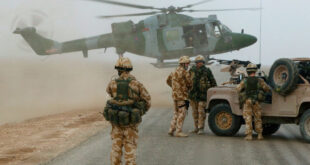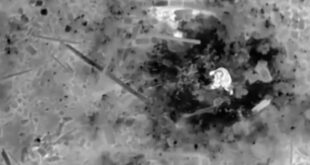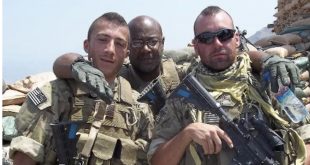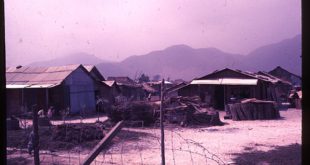POWs and Intel at Fort Hunt in World War II DOD Park Service
Introduction
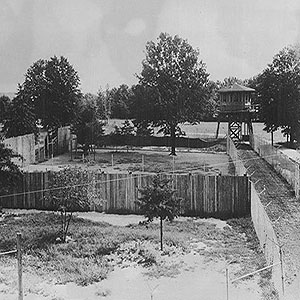
During World War II, Fort Hunt was the location of a top-secret military intelligence installation (P.O. Box 1142), where high value German captives were interrogated, and means were developed for the escape of captured U.S. servicemen. After the War, some German scientists who chose to come to the U.S. rather than go to the Soviet Union were debriefed at Fort Hunt. Thereafter, almost all the buildings were leveled and the servicemen who worked there sworn to secrecy. As a result, no one knew the importance of what had occurred there until the 1990s, when the information was declassified. Even now, information is only slowly coming to light.
Evolving Uses of Fort Hunt: Before the War
By 1923, only a caretaker remained at Fort Hunt. From 1931 through 1933, the first African-American ROTC unit in the nation trained and then later drilled at the site.
In 1932, the War Department sold Fort Hunt to the Public Buildings and Public Parks of the National Capital, whose functions were taken over by the NPS in 1933.
CCC camps were set up around the country, including the one established at Fort Hunt on October 17, 1933, which was designated NP-6. The CCC was a jobs program authorized under the Federal Unemployment Relief Act of 1933 to address joblessness in the Great Depression. After Germany invaded Poland in 1939, NP-6 enrollees increasingly performed national defense work. Along with other CCC camps, NP-6 was terminated in March 1942, as Fort Hunt was made ready for a new and even more significant chapter.
A Top Secret Base Known Only as “P.O. Box 1142”
After the attack on Pearl Harbor on December 7, 1941, the War Department determined that two domestic military intelligence centers would be needed and selected Fort Hunt as the center on the East Coast. On May 15, 1942, the Department of Interior issued a special use permit to the War Department for the duration of the war plus one year for the establishment of the center. The site became known only as “P.O. Box 1142,” the center’s mailing address in Alexandria, Virginia. At its height, P.O. Box 1142 had 87 temporary and permanent structures.
At least three key secret programs were conducted at P.O. Box 1142. The first was a temporary detention center where strategic interrogation of high value POWs was conducted by the US Army’s Military Intelligence Service (MIS) and the Navy’s Office of Naval Intelligence (ONI). The second program was an escape and evasion (E&E) program, which instructed servicemen before their deployment to Europe on E&E methods and provided them with devices to help to evade capture or to escape if captured. The third program was a military intelligence research service.
The Strategic Interrogation Center (MIS-Y)
While the Army was in operational charge of P.O.Box 1142, interrogations were conducted both by the Army’s MIS and by the Navy’s ONI. The interrogators were supported by specialized subsections that enhanced the strategic interrogation process. They included, among others:
• The Enemy Intelligence Subsection, focused on German counterintelligence, espionage, and similar matters
• The Army Subsection, focused on the German Army’s weapons, the organization of military units, and other matters of interest to the US Army
• The Air Subsection, focused on intelligence relating to the Luftwaffe’s weapons, tactics and the developing German rocket program, as well as on the impacts of and potential targets for the Allied strategic bombing campaign in Europe
• The Scientific Research Subsection, focused on German scientists and military-related scientific advances
• The Industrial Economics Subsection, focused on German industrial production and its ability to sustain the war effort’s production needs.
In addition, the Navy interrogated U-boat commanders and crew. Interrogators sought technical information about the submarines and their weapons, crew composition and similar information.
The interrogation teams were carefully chosen and well trained, not only in these and other subjects but also in interrogation techniques. Sixty-eight of the 547 Army personnel (12%) on official rosters of this program received training at the Camp Ritchie Military Intelligence Training Center in Cascade, Maryland. Their training was supplemented with special training in counterintelligence and psychology. A number of the interrogators, some of whom were Jews, were recent immigrants from Nazi Europe who spoke German and knew the German culture. They used non-violent interrogation methods tailored for individual POWs that have since been considered the gold standard of interrogation techniques.
A total of 3,451 prisoners were processed through P.O. Box 1142 from 1942 through July 1945. Information was derived through interrogation, listening devices, and the use of stool pigeons. Another subsection prepared reports, which were then evaluated, and when finalized, sent to the Army, Army Air Force or Navy for their use. More than 5,000 such reports were generated by the end of August 1945.
The intelligence gleaned through this program was invaluable to the Allied war effort. For example, German rockets, including the V-1 and V-2 rockets used to attack England, were made at Peenemunde. The interrogation team learned that fact, and soon thereafter Peenemunde became a target of intensive Allied bombing. Other important information was gained about enemy military operations, weapons technology and other key subjects.
As the war in Europe wound down and then ended, several hundred scientists, military figures and political figures were also brought to P.O. Box 1142 for interrogation. The intelligence obtained from them helped the US in the Cold War that soon followed. For example, Germany outfitted a special submarine, U-234, to travel to Japan at the very end of the war in Europe to aid Japan in its continuing war efforts. U-234 had on board very significant scientific and technical information and highly trained personnel. But U-234 surfaced and surrendered to the Americans on May 14, 1945, in the North Atlantic after the crew learned of Germany’s unconditional surrender. Among its cargo were designs for and samples of Germany’s latest armaments and military products, including its new jetpropelled Messerschmitt aircraft, new radar, and advanced submarines. Moreover, U-234 itself had advanced equipment which American submarines lacked. Among those on board were a Luftwaffe General with deep knowledge of German offensive and defensive air warfare; radar and antiaircraft specialists; one of Germany’s leading electronics experts; and two experts from the firm that had developed and built the new jet airplanes.
In addition, as Germany was overrun, a competition began between the U.S. and the Soviet Union to obtain the expertise of German scientists and others in fields with military applications. The rocket engineer Wernher von Braun and key members of his scientific team were questioned in the fall of 1945 by PO Box 1142 interrogators at Fort Strong on Long Island in Boston after being brought to the U.S. as part of “Operation Paperclip,” a program to utilize the talents of top German scientists and prevent them from working for the Soviets. He later headed the Marshall Space Flight Center of the National Aeronautics and Space Administration. Other Germa scientists were lter questioned at PO Box 1142. Among others who were questioned at P.O. Box 1142 was German General Reinhard Gehlen, the head of all intelligence on the Eastern Front. While controversial, he brought with him substantial intelligence information about the Soviets.
Operation Paperclip
Shortly after V–E Day the War Department operated a project known as “Paperclip,” under which selected German scientists were been brought to this country under military custody for short-term exploitation. Joint Chiefs of Staff believed that in our zones of Germany and Austria a number of specialists’ knowledge and ability could be used to further our technology. General McNarney reported that the services of many of these specialists could be lost unless steps are taken quickly to assure exploitation under favorable circumstances.
“Paperclip” was to include a total of between 800 and 1000 specialists. “Since cooperation of the specialists was necessary to successful exploitation, provision was made for bringing members of specialists’ families to this country, and for relaxing the formerly strict custody arrangements. The War Department would be responsible for custody and for excluding from the program persons with Nazi or militaristic records.
The Escape and Evasion Program
Even more secret than the strategic interrogation program was Fort Hunt’s escape and evasion (E&E) program (MIS_X). Even the fort’s commandant was unaware of this mission to prepare U.S. servicemen to evade capture by the enemy and, if captured, to escape. This was particularly crucial for the Army Air Force. The Eighth Army Air Force flew daylight bombing raids over Nazi-controlled Europe and Germany itself, a hazardous undertaking in which numerous planes were shot down and survivors captured.
The British had already discovered the need for such a program, having started such bombing before America entered the war. The P.O. Box 1142 program was modeled on the British one and began operations in February 1943. The nerve center of this program was located in the renovated old post hospital, the site of the current Picnic Pavilion A.
One mission of the E&E program was to create maps of areas where bombers were going so downed airmen could use them to find their way back. Silk maps created at P.O. Box 1142 were distributed to the Air Force for that use. Also, 5 million uniform buttons were created containing hidden compasses.
Codes created to enable captured airmen to communicate with P.O. Box 1142 were taught to selected airmen known as “code users” or “CU.” If captured, the CUs would send letters home to fictitious addresses, which the Post Office knew to send to P.O. Box 1142. The 14 cryptologists in the E&E program would decode the messages and send them through the chain of command. The information transfer was both to aid in escape activities and to convey to the U.S. military the intelligence that the prisoners gleaned in captivity.
The E&E program created two fictitious prisoner relief organizations and used their names to send care packages to the POW camps. But those packages were a cover for smuggling escape and evasion materials into the camps. Letters to the CUs in the camps would inform them in advance of the incoming packages. The E&E program succeeded in hiding compasses, tissue paper maps, counterfeit German currency, radios and similar items in those packages. By 1944, the E&E program was sending between 80 and 120 packages each day to German POW camps.
American companies were enlisted secretly to assist in this effort. For example, an electronics manufacturer made the four components of a specially designed miniature radio transmitter, placing each component in a separate capsule. The capsules were then shipped to a baseball manufacturer that wound each capsule into a color-coded baseball. At the prison camps, the components were extracted and assembled into transmitters. Another company inserted map segments between special peel-away outer layers in playing cards. Another donated cartons of cigarettes in which crystal radio receivers were hidden.
In March 1944, 76 Allied POWs escaped from the North Compound of Stalag Luft III through one of the three long and deep tunnels that they had dug. For five months prior to the breakout, MIS-X had been sending escape aids to the camp. All but three of the escapees were captured, and Hitler had 50 of them put to death. None of the escapees were Americans, as they had all been transferred to the South Compound eight weeks before the escape. One and a half million German troops were diverted to catch the escapees. The 1963 movie “The Great Escape” chronicled this escape.
During the war, the Germans captured 95,532 U.S. servicemen. Of those 737 escaped. It is not known how many managed to evade capture due to the E&E program. While the number of escapees was not large, the E&E program contributed to the morale of U.S. airmen sent on dangerous missions over enemy territory and of those captured.
On August 20, 1945, the War Department ordered all records of the E&E program at P.O. Box 1142 destroyed.
HISTORY
Fort Hood has come a long way during its more than 75 years – from rolling Central Texas farmlands to the Army’s premier training facility of today’s Soldiers – and that growth continues. Fort Hood is located in southwestern Bell and southeastern Coryell counties in Central Texas. Most of the 218,000 acres owned by the United States Army is located in Coryell County. On January 14, 1942, at the beginning of United States involvement in World War II, it was announced that a tank destroyer tactical and firing center would be established near Killeen, Texas.

The 1950s and 1960s saw continued expansion as Fort Hood welcomed III Corps Headquarters and the 1954 arrival of the post’s second division when the 4th Armored Division joined the newly-reactivated 1st Armored Division.

With the Korean War in the 1950s, followed in 1965 by the Vietnam War as well as the ongoing Cold War and its inherent threat of atomic weapons, Fort Hood’s massive range lands were ideal to conduct the heavy, mounted warfare training. Training ramped up and the 1940’s considerations of Camp Hood being only a temporary post were abolished when Fort Hood was established as a permanent installation in 1950.

Along with more troops, Families of Soldiers began moving onto the installation in the 1960s and 1970s.
More housing was added, as well as a commissary and a new hospital to help support those Families.
That relationship with the community evolved into a close one and continues to this day with military and civilian personnel working together in many endeavors.

As Vietnam was winding down, divisions and smaller units moved in and out of Fort Hood, most notable was the 1st Cavalry Division’s assignment to the Great Place following most of the division’s return from Vietnam in 1971.
Throughout the remainder of the 1970s and into the 1980s, training was steady at Fort Hood and more facilities were constructed to accommodate that training. St. Elijah Modern Operations on Urban Terrain, Fort Hood’s first MOUT site, was built in the 1980s as a mock European village, complete with buildings representing gas stations and retail facilities to train Soldiers for missions within a city. Since that time, other MOUT sites have been added across the range areas to replicate Iraqi and Afghan villages for the current operating environments.

Throughout the 1980s and 1990s, Fort Hood Soldiers participated in operations in Bosnia, Somalia and the first Gulf War. Fort Hood Soldiers deployed and played an active role in Desert Storm and Desert Shield in the early 1990s. After a seemingly easy victory in Iraq during the Gulf War, Fort Hood continued to build its strength.
This also was the Army’s age of digitization, first with the M1A2 Abrams tank, and later on the Bradley Fighting Vehicle. That digitization continues to this day as the service adopts new vehicles and updates others.

As the 1990s gave way to the new millennium, Fort Hood and its Soldiers and Families would see dramatic changes in the fall of 2001. When the Sept. 11 attacks happened, Soldiers and Families at Fort Hood were immediately affected. The Soldiers left the motor pools and training areas behind, and focused on readiness for the imminent deployment to the Middle East. While most of the Army thought the 1st Cavalry Division would be deploying immediately, the 4th Infantry Division ended up deploying before 1st Cav. Div., being the first to deploy in the Global War on Terrorism to leave.

In the following years, there would be an inflow of Soldiers coming to the Great Place to answer the nation’s call and head not only to Iraq, but also Afghanistan. Operation Iraqi Freedom ended when U.S. troops left Iraq in December of 2011; Operation Enduring Freedom refers to many branches of the war under the GWOT, including Afghanistan, Kyrgyzstan, the Philippines and more; and Operation New Dawn began in September of 2012 when the end of OEF was in sight. Fort Hood Soldiers and the rest of the U. S. military are still serving overseas as part of Operation Inherent Resolve in the Middle East and Operation Enduring Freedom in Afghanistan.

On post, Fort Hood is continually adapting and growing to meet the needs of those Soldiers as they return home, and to support their Families. That support has been visible over the years in the new child development centers, a new Post Exchange facility, new stadium and the state-of-the-art Carl R. Darnall Army Medical Center.

Fort Hood is now the largest active duty armored post in the U.S. Armed Forces. There are nearly 40,000 Soldiers who work on Fort Hood. The Soldiers of Fort Hood are infantrymen, cavalrymen, and tankers. They are engineers, mechanics and health care professionals. They are the life of Fort Hood. Their training gives Fort Hood its purpose, just as Camp Hood troops did back in 1942. They are part of what has made Fort Hood the “Great Place” for more than seven decades.
 Soldier of Fortune Magazine The Journal of Professional Adventurers
Soldier of Fortune Magazine The Journal of Professional Adventurers



